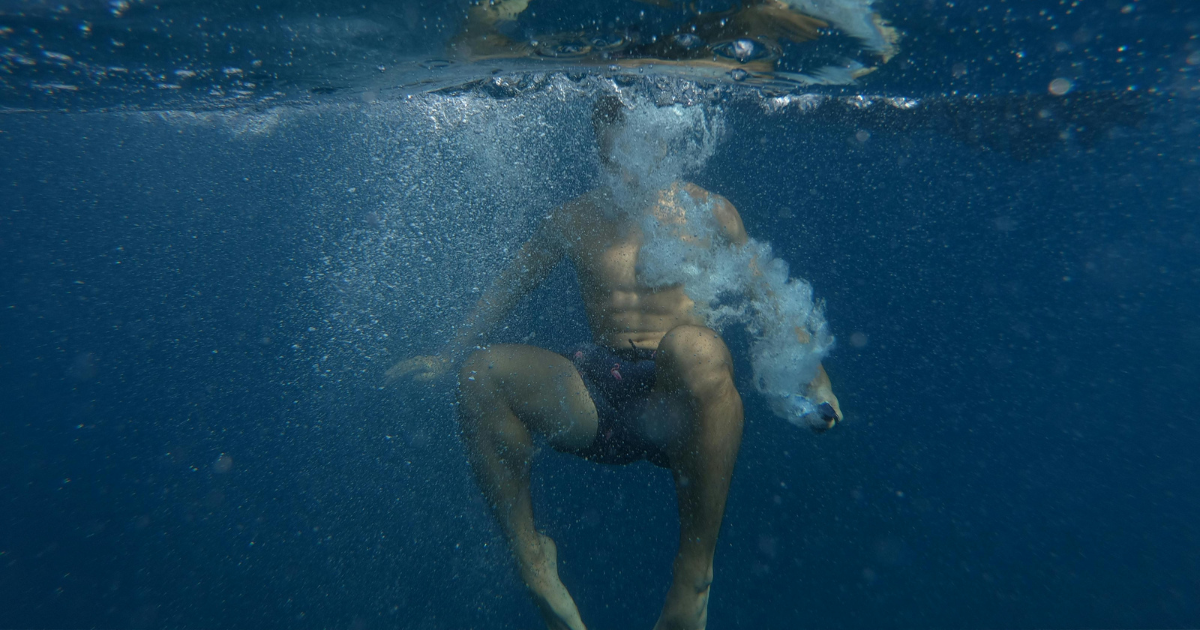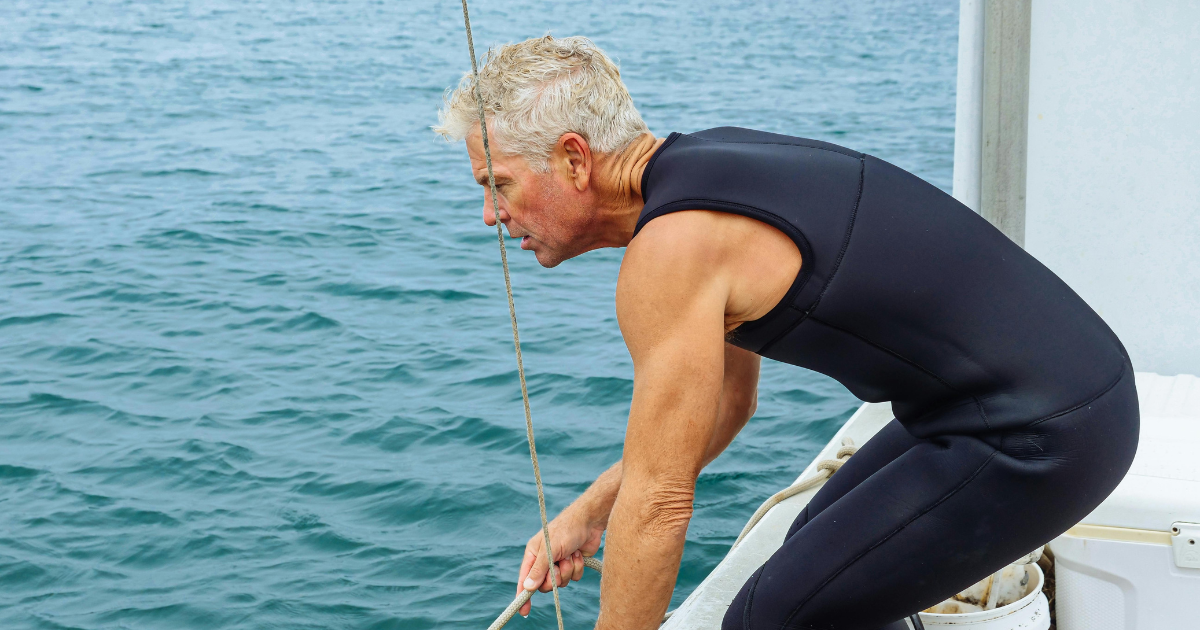Thalassophobia represents an intense and persistent fear that deep bodies of water, including oceans, seas, and large lakes, evoke in individuals. People with thalassophobia experience intense anxiety about deep water that interferes with their daily functioning, although most individuals feel only mild discomfort when thinking about the ocean’s vastness. The fear leads to panic attacks and avoidance behaviors and produces substantial distress that occurs even when there is no present danger.
People develop thalassophobia either through past traumatic events or because their brains evolved to stay away from deep, mysterious spaces. The management and treatment of thalassophobia become possible when the right approach is implemented.
This article examines thalassophobia symptoms together with its causes and available treatment methods, which include cognitive behavioral therapy (CBT) and exposure therapy. The first step to taking back control of your fears begins with understanding how thalassophobia affects you.
What Is Thalassophobia?
Understanding the Nature of This Fear
Thalassophobia is a severe and unreasonable fear of deep water that causes people to experience overwhelming distress in ordinary circumstances. The condition causes extreme anxiety when viewing ocean pictures, flying above water, or contemplating underwater mysteries. The fear of thalassophobia drives people to avoid situations while causing them distress and triggering excessive fear reactions beyond reason.
People commonly develop a fear of deep water because they lack understanding of it. The ocean creates an atmosphere of uncertainty because its deep waters contain numerous unknown creatures and mysteries, which make many people uncomfortable.
The fear grows stronger because of stories about shipwrecks, underwater threats, and frightening oceanic scenes depicted in movies. Normal caution toward deep water exists, but thalassophobia transforms this caution into an intense condition that prevents people from swimming or boating and from standing near coastlines.
Rational vs. Irrational Fear Responses
Deep water fear is a protective mechanism because it makes people maintain awareness and vigilance when drowning risks or other threats occur. The irrational fear response of thalassophobia produces excessive panic, although there is no actual danger present.
A person with a rational fear would use a life jacket while boating and stay away from strong water currents. People with thalassophobia experience intense distress from merely looking at deep pools or listening to ocean videos or deep-sea exploration discussions.

The unreasoning fear response causes people to avoid situations that interfere with their quality of life, such as stopping them from enjoying relaxation time near water, social events, or vacations.
Recognizing the Symptoms of Thalassophobia
How It Manifests Physically and Emotionally
Thalassophobia produces symptoms that combine physical responses with emotional reactions that share characteristics with other anxiety disorders. The fear of deep water causes people to experience heart palpitations, dizziness, sweating, nausea, and breathing difficulties. The overwhelming fear causes people to develop avoidance behaviors while they experience intense physical reactions.
Deep water situations trigger intrusive thoughts and nightmares, which create excessive worry among people with thalassophobia. The condition makes it difficult for some individuals to watch ocean-related films or documentaries; others experience anxiety when discussing water-related activities. The symptoms create distress, which disrupts both personal and social life routines.
Causes of Thalassophobia
Trauma, Evolution, and Deep-Seated Anxiety
People with thalassophobia experience excessive worry because deep water situations cause intrusive thoughts and nightmares. People with this condition struggle to watch ocean-related films or documentaries and experience anxiety when discussing water-related activities. The symptoms create distress that disrupts the normal functioning of personal and social life routines.
Evolutionary Fear and Anxiety Disorders in Thalassophobia
Evolutionary fear is one of the additional factors. Throughout history, humans have naturally avoided large bodies of water because they presented potential dangers. The ocean displayed unpredictable behavior, frightening early humans because they did not understand its dangers, including drowning, sea creatures, and powerful storms. The fear developed in ancient times continues to exist today as an extreme phobic reaction.
People with existing anxiety disorders tend to become more prone to developing thalassophobia. The fear of deep water can become more intense when someone has generalized anxiety, post-traumatic stress disorder (PTSD), or obsessive-compulsive tendencies. The fear may then spread beyond the ocean to influence how people perceive risk and danger in other areas of life.
Could You Have Thalassophobia? Exploring Self-Awareness and Tests
People often question whether their deep water phobia is typical or classified as thalassophobia. An essential personal evaluation will help you understand the level of your fear. Thalassophobia may be present if you experience intense distress when near deep water or think about it, and if you avoid water situations and show physical symptoms like rapid heartbeat and dizziness.
Online tests for thalassophobia allow you to assess your reactions to various water scenarios. They do not replace professional evaluations but serve as helpful tools to understand your fear. Professional guidance becomes necessary when test results indicate possible thalassophobia because it will lead to finding suitable methods to handle and defeat your fear.

How to Overcome Thalassophobia Naturally and Clinically
Conquering thalassophobia requires personal self-help methods and professional therapeutic interventions. People who gradually expose themselves to deep water in safe environments often experience decreased deep-sea fear. Deep breathing, along with visualization and mindfulness techniques, helps people control their anxiety when they encounter situations that trigger their fear.
People who experience intense symptoms of thalassophobia usually need professional help. Exposure therapy, together with cognitive behavioral therapy (CBT) have proven to be highly successful treatments for phobias. Medical professionals might provide patients with prescription medication to treat their anxiety symptoms. People with thalassophobia who get professional help will discover ways to change their thinking patterns, which enables them to decrease their fear reactions.
Treatment for Thalassophobia: From CBT to Exposure Therapy
The most successful treatment for thalassophobia exists in cognitive behavioral therapy (CBT). The therapeutic approach identifies and transforms harmful thoughts that generate unreasonable fears. Through therapy sessions with a professional, people can develop skills to question their fear-based beliefs and adopt more logical perspectives.
Exposure therapy stands as a strong therapeutic method that helps patients overcome thalassophobia. The therapeutic method requires step-by-step exposure of people to deep water within a secure environment. The initial steps begin with ocean picture viewing, video observation, lake exploration, and water immersion. The fear response becomes less intense through repeated exposure to deep water situations, which makes the experience less frightening.
People who experience intense water anxiety may need to take antianxiety medications or antidepressants as part of their treatment. Phobia treatment through medication does not eliminate phobias, but it helps patients experience few symptoms, which enhances therapy effectiveness.
Get Professional Help for Thalassophobia at Clear Mind Treatment
Professional treatment exists to help you recover control when deep water phobia disrupts your daily life. The professionals at Clear Mind Treatment provide evidence-based phobia treatment for thalassophobia through cognitive behavioral therapy (CBT) and exposure therapy. Our experienced therapist offers compassionate support to help you face your fears in a safe and structured environment.
Thalassophobia should not control what you do in life. Clear Mind Treatment is ready to receive your call for help, which will start your journey toward defeating your fear.
FAQs
What are the symptoms of thalassophobia?
Symptoms include rapid heartbeat, dizziness, sweating, panic attacks, avoidance of deep water, and intrusive thoughts about drowning.
What causes thalassophobia?
This fear can stem from past trauma, an evolutionary instinct, or an underlying anxiety disorder.
Can thalassophobia be treated?
Yes, through therapy methods like CBT and exposure therapy, as well as medication in severe cases.
How do you overcome thalassophobia?
Gradual exposure, cognitive therapy, relaxation techniques, and professional treatment can help.
Is thalassophobia linked to anxiety disorders?
Yes, it is often associated with generalized anxiety, PTSD, and panic disorder.





